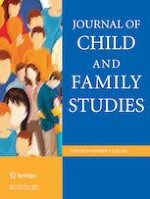24-04-2019 | Original Paper
National Analysis of the Disciplinary Exclusion of Black Students with and without Disabilities
Gepubliceerd in: Journal of Child and Family Studies | Uitgave 7/2019
Log in om toegang te krijgenAbstract
Objective
The objective of this study was to determine the current national results regarding school discipline for Black students. There are decades of data demonstrating the discriminatory discipline faced by Black children and adolescents in America’s K-12 public education system. Yet, there is limited research focusing exclusively on Black students with disabilities and no publically available research documenting the analysis of Black students with and without disabilities at the national level.
Method
The method was a quantitative analysis using rates and weighted risk ratios.
Results
The results indicated that ∼10% of Black students received a suspension, compared with 2.5% for all other racial/ethnic groups. For students with disabilities, ∼23% of Black students received a suspension, compared with ∼9% for Hispanic and White students with disabilities, almost 6% for Asian students with disabilities, and 21% for Native American students with disabilities. Risk ratio results vary by comparison group.
Conclusions
Black students with and without disabilities continue to be grossly overrepresented in exclusionary discipline compared to their proportion within the population. Implications for research, policy, and practice are provided.
